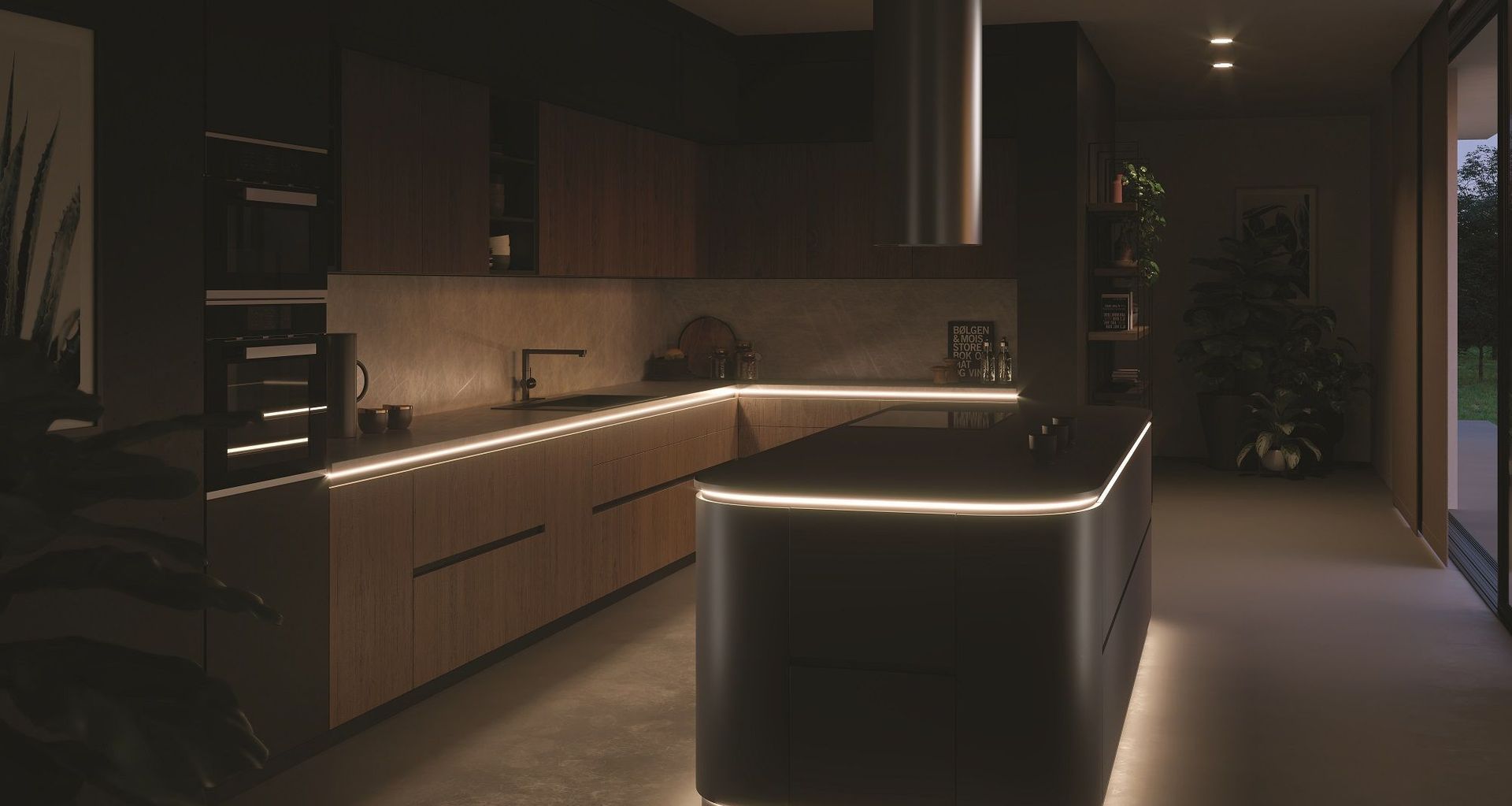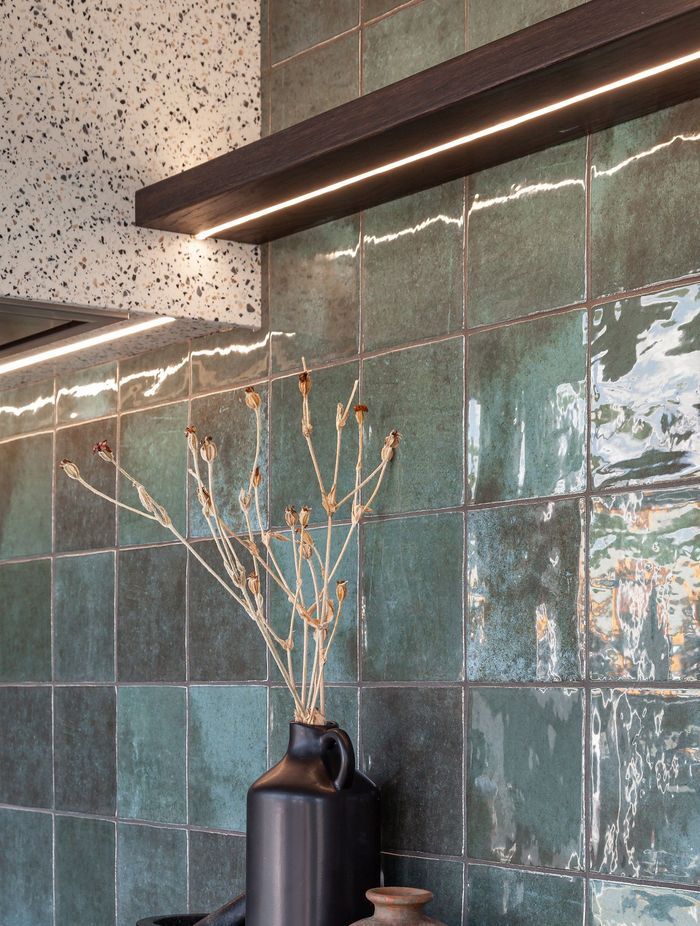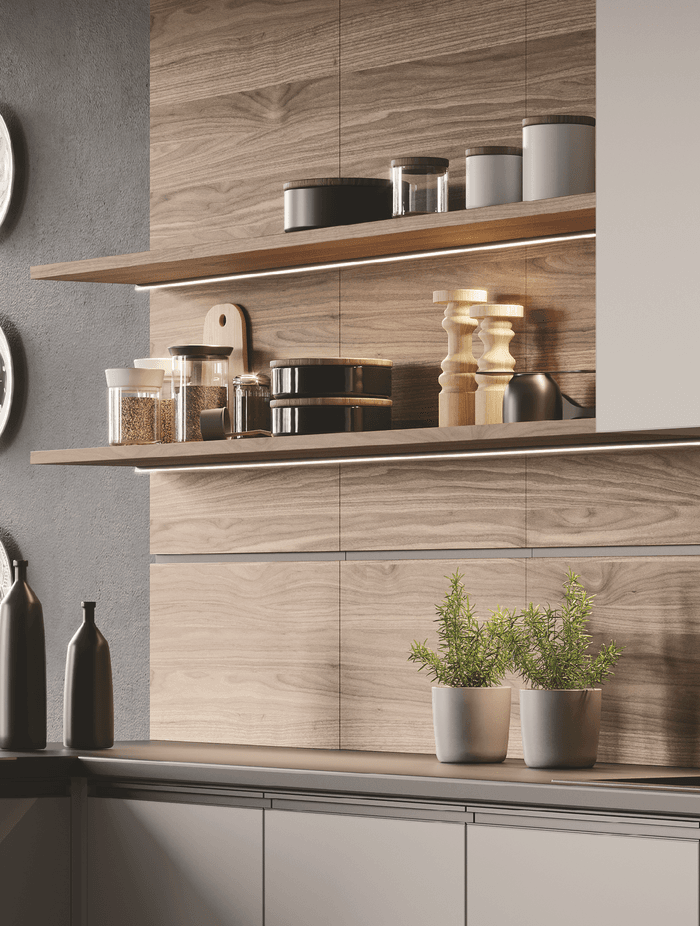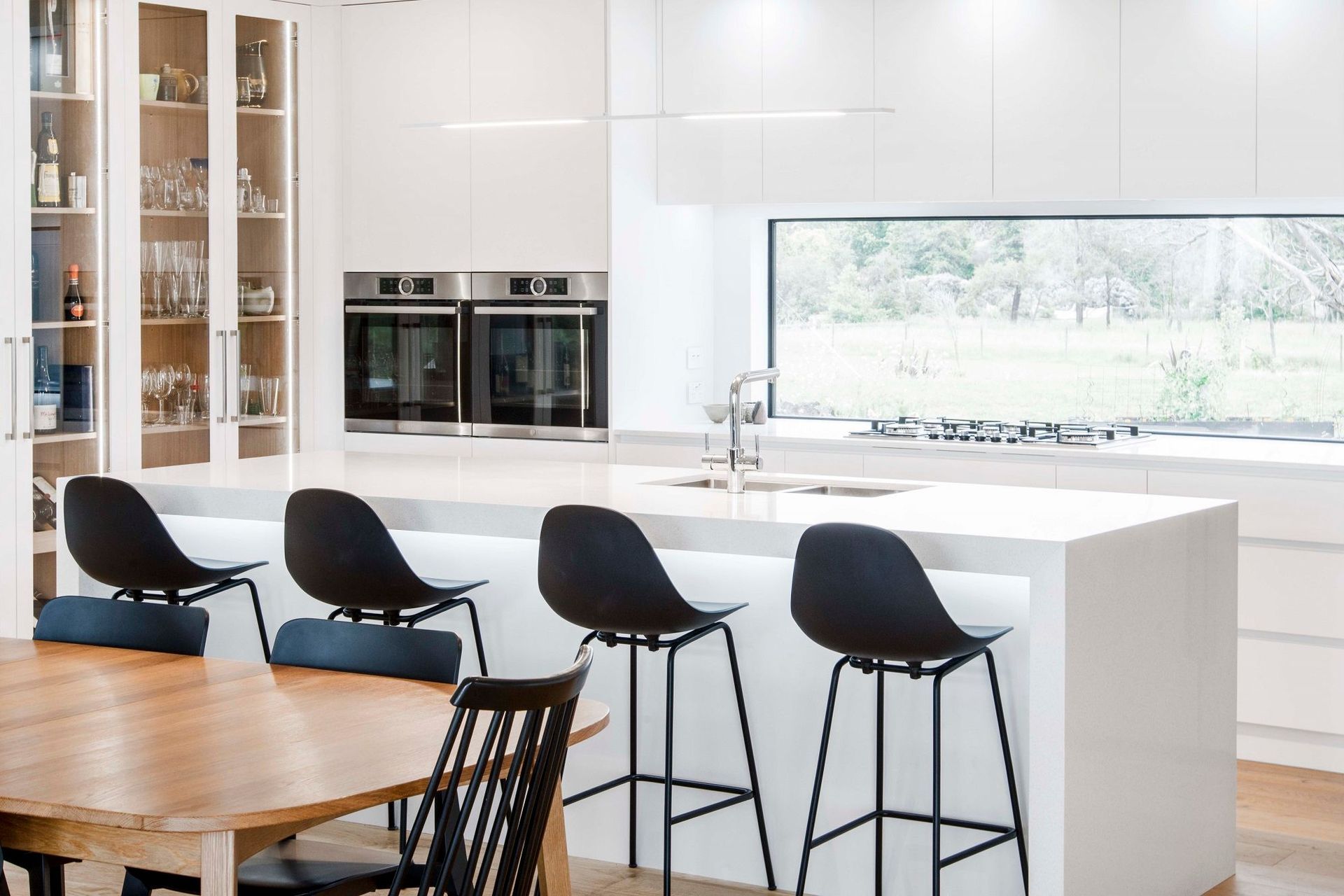The latest design trends in LED kitchen lighting
Written by
10 December 2023
•
4 min read

Lighting performs on many levels in the home. It can be used as task lighting to illuminate the most-used workspaces such as benchtops and kitchen islands, and make darker spaces, such as pantries, more practical.
Atmosphere and mood can also be influenced by lighting. Ambient lighting can transform a kitchen from merely a practical preparation zone, to a relaxed entertaining space – think under-counter lighting that creates a soft glow of light, and strip lighting around toe-kicks on an island unit or breakfast bar that creates the impressive illusion of floating furniture.
The light-emitting diode, known as LED lighting, is one of the most versatile ways to achieve atmosphere and provide much-needed task lighting in the kitchen. The innovative, Italian-designed Domus Line LED range from Fit has been crafted with this in mind.
“As the kitchen is both a social environment and a workspace, you want a mixture of ambient and task lighting,” explains Marty Boakes, director at Fit. “Ambient lights will set the mood with a soft glow, while task lights will focus stronger light over key workspaces such as an island or countertop. The key is balancing the two sources so your kitchen is as warm and inviting as it is functional.”


Minimalist design
Ideal for both task and ambient lighting, Tynn is a stylish profile designed for surface mounting under shelves and cabinets. Inclined at 20 degrees to ensure optimal light projection onto work surfaces or shelves, it is available in anodised aluminium or matt black.
“There’s such a growing use of minimalistic lighting such as this, and there are also profiles where you have no extrusion or any other elements apart from the light,” says Boakes.

A streamlined approach
“Another unique feature with the Domus Line range is its switching and dimming options, including hidden switches,” says Boakes. “One of the switches will work through a substrate; for example, should it be mounted on the underside of a benchtop, you can turn the light on by touching the top of the benchtop.”
Designed for recessed installation behind most non-metallic surfaces – including wood up to 30mm thick, class up to 12mm thick, and plastic up to 20mm thick – the Capsens 2.0 Concealed Touch Dimmer Switch is an electronic capacitive sensor with an activation area of 50mm to turn the lights on or off.
Longer contact activates the dimmer function for light intensity, with a short flash showing maximum level has been reached.
Natural and warm tones
Intended to mimic the natural light experienced on a clear day, natural white LED lighting is suited to contemporary design styles, says Boakes, while the warm white LED option is popular in homes with natural timbers and finishes.
“It’s a personal choice of whether you will have natural or warm white; there’s a strong tendency toward warm white at the moment with the use of timbers and metal finishes – bronze and brass really blend well with a warm white. It really depends on the finishings of your fittings.”

Considered lighting for dark kitchens and cabinetry
The strip lighting options in the range – including Flexyled, Tynn and the soon-to-be-released Apex Dark – pair elegantly with dark timbers.
“When the lights are off, the body of the lighting doesn’t stand out – particularly when it’s set in dark timber,” says Boakes. This creates an elegant, streamlined appearance in designs where the cabinetry or furniture is intended to be the focal point, with lighting used to elevate and highlight its beauty.
Benefits of LED lighting
As well as aesthetic versatility, LED lighting is one of the most energy-efficient and durable lighting options available.
LED lights use up to 80 per cent less energy than standard incandescent light bulbs and can last for at least 15,000 hours. At three hours of use per day, 365 days a year, this could mean up to 13 years before you will need to replace your lights.
“They have a very low heat output and our lighting components are either 12 or 24 volt; this makes them all very safe to use in the home,” adds Boakes.
“All of our Domus Line products have New Zealand and Australian electrical certification. We’re required by law to carry documents and be able to supply them within a certain time period if requested by a government body, for example.
“These are premium products influenced by European design, and in the Domus Line range, the Flexyled style is rated with an IP44 moisture rating. This means it can be used in areas where there’s moisture such as the bathroom or laundry.”
Learn more about LED kitchen lighting from Fit and kitchen lighting design on ArchiPro.
